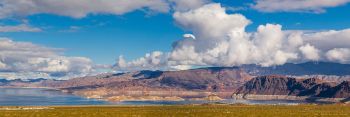Reservoirs: Difference between revisions
From ASDSO Dam Safety Toolbox
No edit summary |
No edit summary |
||
| Line 1: | Line 1: | ||
__NOTOC__ | __NOTOC__ | ||
[[Category:Anatomy]] | |||
---- | ---- | ||
<!-- Delete any sections that are not necessary to your topic. Add pictures/sections as needed --> | <!-- Delete any sections that are not necessary to your topic. Add pictures/sections as needed --> | ||
| Line 14: | Line 15: | ||
}} | }} | ||
Reservoirs are artificial bodies of water impounded behind a dam for one or more intended purposes including water storage, flood protection, hydropower generation, or recreation. | Reservoirs are artificial bodies of water impounded behind a dam for one or more intended purposes including water storage, flood protection, hydropower generation, or [[recreation]]. | ||
==Components of a Reservoir== | ==Components of a Reservoir== | ||
Revision as of 01:28, 18 November 2022

|
| Lade Mead, a reservoir formed by the Hoover Dam on the Colorado River, is the largest reservoir in the United States by water capacity. (National Parks Service) |
Reservoirs are artificial bodies of water impounded behind a dam for one or more intended purposes including water storage, flood protection, hydropower generation, or recreation.
Components of a Reservoir
Life Cycle of a Reservoir
Citations:
Revision ID: 4233
Revision Date: 11/18/2022
